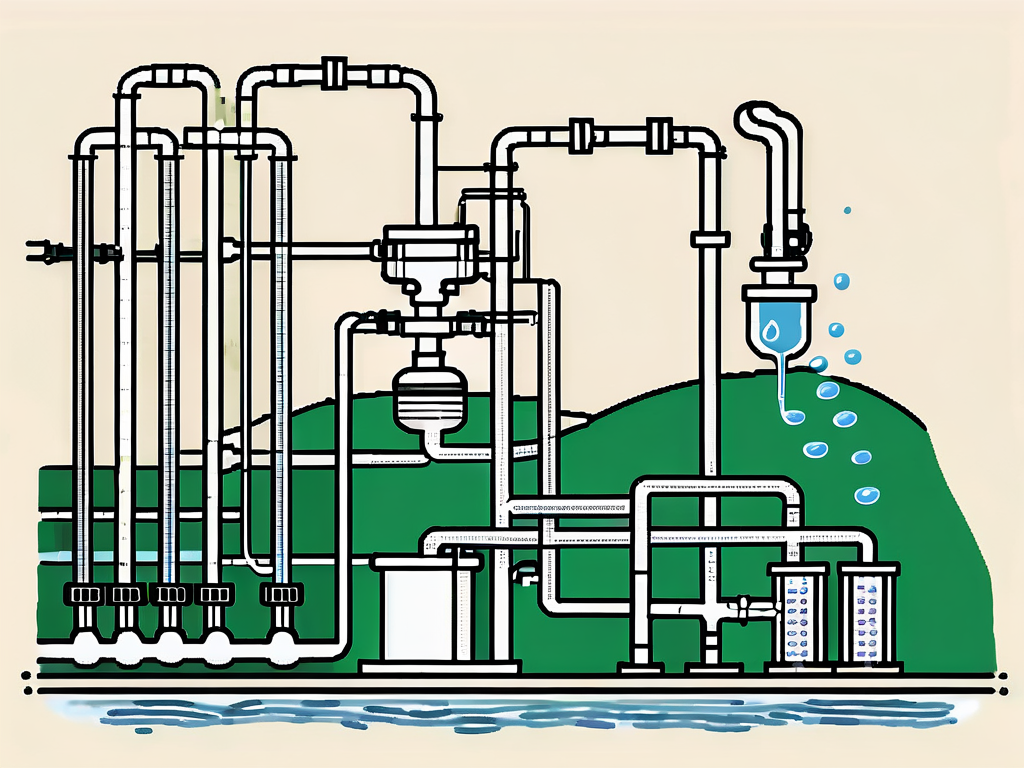
Kjeldahl Nitrogen: Wastewater Treatment Explained
The Kjeldahl method, named after its inventor Johan Kjeldahl, is a widely used method for the determination of nitrogen content in organic and inorganic samples. It is particularly significant in the field of wastewater treatment, where it is used to measure the amount of organic and ammonia nitrogen present in the water. This article provides a comprehensive explanation of the Kjeldahl Nitrogen method, its application in wastewater treatment, and its importance in maintaining environmental health.
Understanding the Kjeldahl Nitrogen method and its application in wastewater treatment is crucial for environmental scientists, wastewater treatment plant operators, and anyone involved in water quality management. This method allows for accurate measurement of nitrogen content, which is essential for assessing the effectiveness of wastewater treatment processes and ensuring the safe discharge or reuse of treated water.
Understanding Nitrogen in Wastewater
Nitrogen is a key element in wastewater, primarily in the form of organic nitrogen, ammonia, and nitrate. Organic nitrogen comes from human waste, food waste, and other organic materials, while ammonia and nitrate are produced during the biological treatment process. Nitrogen in its various forms plays a significant role in the biological processes that occur in wastewater treatment.
However, excessive amounts of nitrogen in wastewater can lead to problems. When discharged into bodies of water, high levels of nitrogen can cause eutrophication, a process that depletes oxygen in the water and leads to the death of aquatic life. Therefore, it is crucial to accurately measure and control the nitrogen content in wastewater to prevent environmental damage.
The Role of Kjeldahl Nitrogen
Kjeldahl Nitrogen is a measure of the total amount of organic and ammonia nitrogen in a sample. It does not include nitrate or nitrite nitrogen, as these forms are not reduced during the Kjeldahl digestion process. The Kjeldahl method is therefore used to measure the nitrogen content that is directly associated with organic matter and the biological treatment process.
The measurement of Kjeldahl Nitrogen in wastewater provides valuable information about the effectiveness of the treatment process. A decrease in Kjeldahl Nitrogen content indicates successful conversion of organic and ammonia nitrogen into nitrate, which can then be removed through denitrification. Therefore, monitoring Kjeldahl Nitrogen levels is a crucial part of managing and optimizing wastewater treatment processes.
The Kjeldahl Method
The Kjeldahl method involves three main steps: digestion, neutralization, and distillation. During digestion, the sample is heated with sulfuric acid, which breaks down the organic material and converts all nitrogen to ammonia. The resulting solution is then neutralized with a strong base, and the ammonia is distilled and collected in a solution of boric acid.
The amount of ammonia, and thus the amount of nitrogen in the original sample, is then determined by titration. The boric acid solution is titrated with a standard solution of sulfuric acid, and the volume of acid required to reach the endpoint is used to calculate the nitrogen content. This method provides a reliable and accurate measure of the nitrogen content in a wide range of samples, including wastewater.
Digestion
The digestion step is crucial for breaking down the organic material in the sample and converting all nitrogen to ammonia. This is achieved by heating the sample with sulfuric acid and a catalyst, usually a mixture of copper, selenium, and mercury. The heat and acid break down the organic material, while the catalyst accelerates the reaction and ensures complete conversion of nitrogen to ammonia.
The digestion process is typically carried out in a digestion block or a microwave digestion system. The sample is heated to a high temperature, usually around 370°C, and maintained at this temperature for a specific period of time. The exact temperature and duration of digestion can vary depending on the nature of the sample and the specific requirements of the analysis.
Neutralization and Distillation
After digestion, the resulting solution is neutralized with a strong base, typically sodium hydroxide. This raises the pH of the solution and converts all the ammonia to ammonium hydroxide. The solution is then heated to distill off the ammonia, which is collected in a solution of boric acid.
The distillation process is carried out in a distillation apparatus, which consists of a distillation flask, a condenser, and a receiving flask. The sample solution is heated in the distillation flask, and the ammonia gas that is produced is condensed and collected in the receiving flask. The volume of ammonia collected is directly proportional to the nitrogen content in the original sample.
Applications of the Kjeldahl Method in Wastewater Treatment
The Kjeldahl method is widely used in wastewater treatment to measure the organic and ammonia nitrogen content in the water. This information is crucial for assessing the effectiveness of the treatment process and ensuring the safe discharge or reuse of the treated water. By monitoring the Kjeldahl Nitrogen levels, operators can adjust the treatment process as needed to optimize nitrogen removal.

In addition to its use in routine monitoring, the Kjeldahl method is also used in research and development of new wastewater treatment technologies. By providing accurate and reliable measurements of nitrogen content, the Kjeldahl method supports the development of more effective and efficient treatment processes.
Monitoring and Control
Regular monitoring of Kjeldahl Nitrogen levels is a crucial part of wastewater treatment. By measuring the nitrogen content before and after each stage of the treatment process, operators can assess the effectiveness of the process and make necessary adjustments. For example, if the Kjeldahl Nitrogen content remains high after the biological treatment stage, this indicates that the process is not effectively converting organic and ammonia nitrogen into nitrate.
Monitoring Kjeldahl Nitrogen levels also helps to prevent environmental damage. By ensuring that the nitrogen content is reduced to safe levels before the treated water is discharged, operators can prevent eutrophication and other forms of water pollution. Therefore, regular monitoring and control of Kjeldahl Nitrogen levels is essential for both the effectiveness of the treatment process and the protection of the environment.
Research and Development
The Kjeldahl method is also a valuable tool in the research and development of new wastewater treatment technologies. By providing accurate and reliable measurements of nitrogen content, the Kjeldahl method supports the development of more effective and efficient treatment processes. For example, researchers can use the Kjeldahl method to measure the nitrogen content in experimental treatment systems and compare the results with those of conventional treatment processes.
In addition to its use in developing new technologies, the Kjeldahl method is also used in the evaluation and optimization of existing treatment processes. By measuring the nitrogen content at various stages of the process, researchers can identify areas of inefficiency and develop strategies for improvement. Therefore, the Kjeldahl method plays a crucial role in the ongoing effort to improve the effectiveness and efficiency of wastewater treatment.
Conclusion
The Kjeldahl Nitrogen method is a crucial tool in wastewater treatment, providing accurate and reliable measurements of the organic and ammonia nitrogen content in the water. By monitoring the Kjeldahl Nitrogen levels, operators can assess the effectiveness of the treatment process, make necessary adjustments, and ensure the safe discharge or reuse of the treated water. Furthermore, the Kjeldahl method supports the research and development of new treatment technologies, contributing to the ongoing improvement of wastewater treatment processes.

While the Kjeldahl method is a powerful tool, it is also complex and requires careful handling of hazardous chemicals. Therefore, it is crucial to follow proper safety procedures and use appropriate equipment when performing the Kjeldahl method. With proper use, the Kjeldahl method can provide valuable information that contributes to the effective and environmentally responsible treatment of wastewater.



